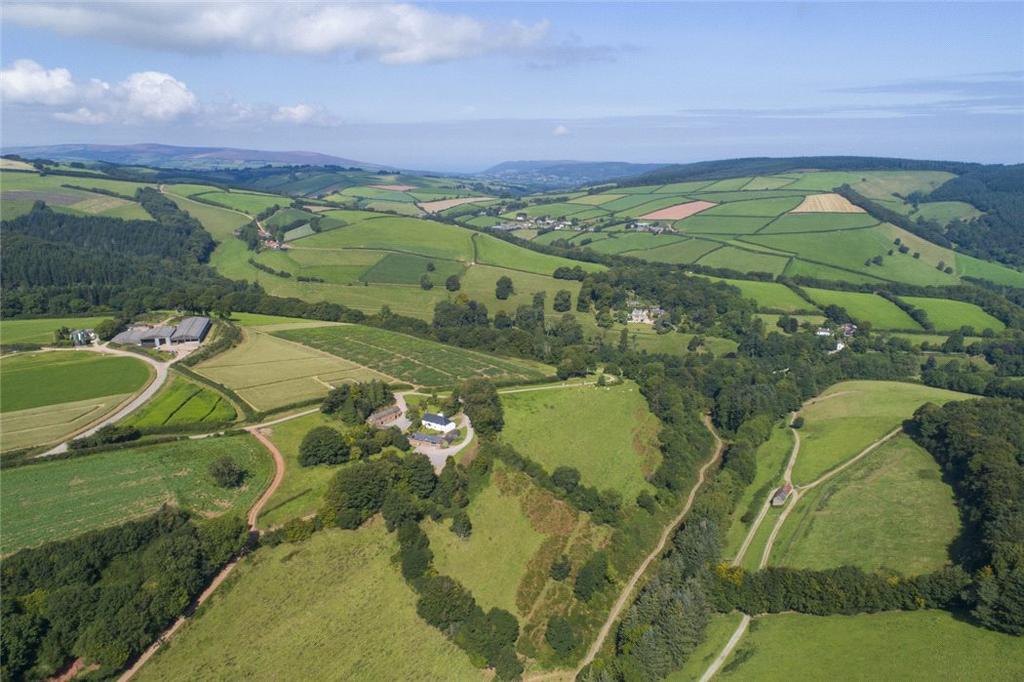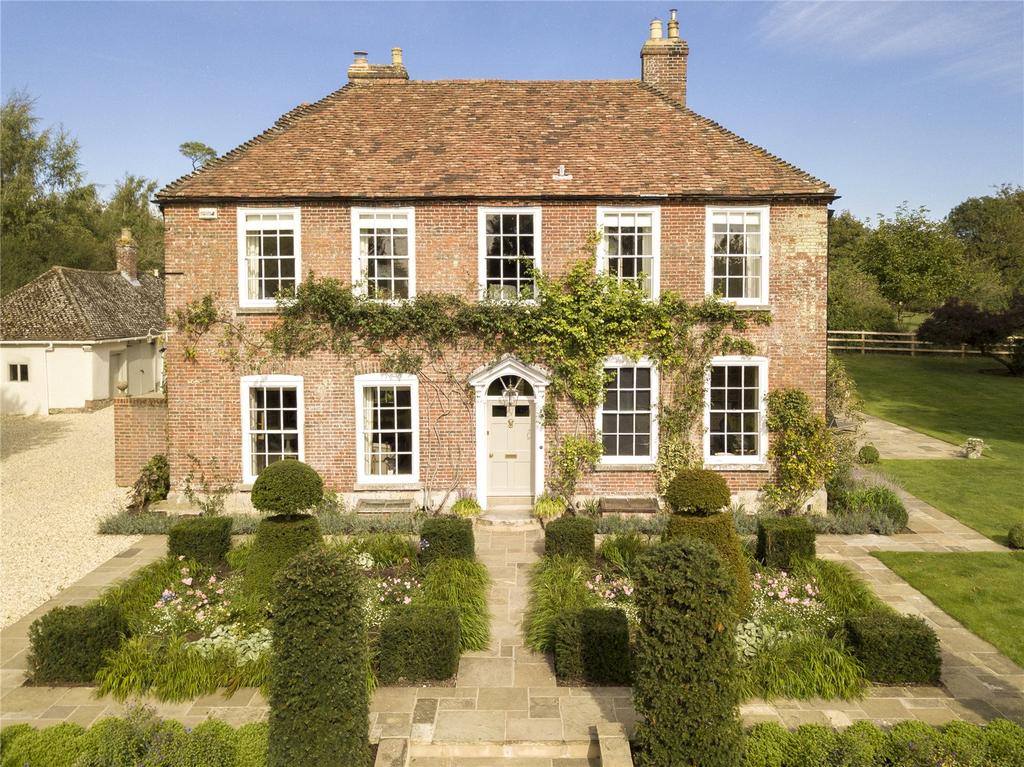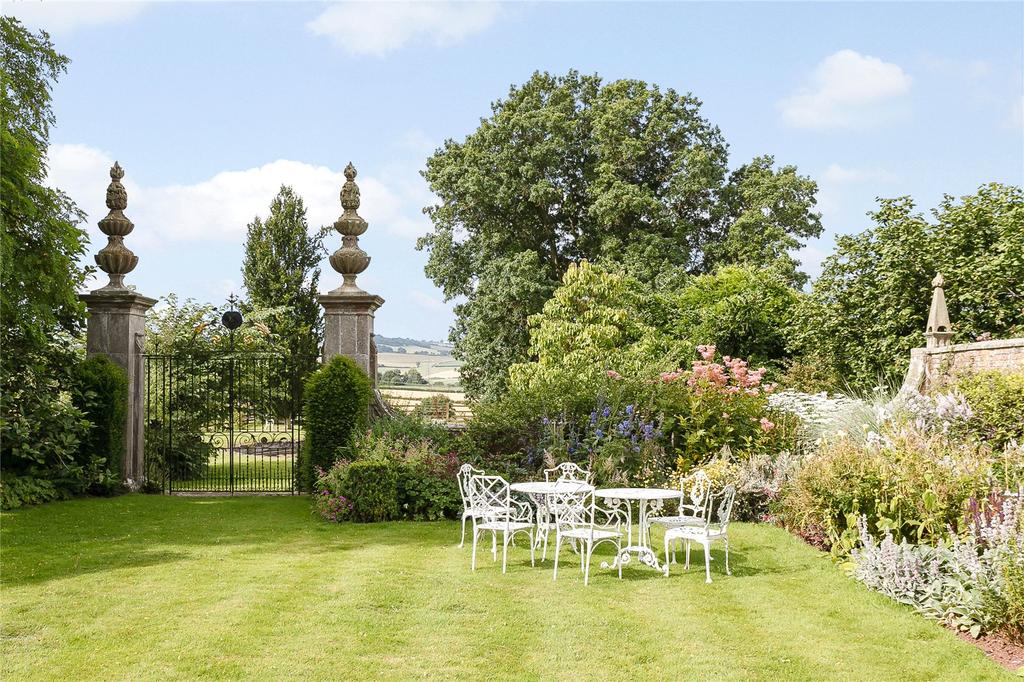After three years of stalling, the English country house market picked up again in 2019 says Penny Churchill, as she picks out her property highlights of the year from the West Country, Midlands and northern England.
Three years after Brexit slammed the brakes on the upper end of the country house market, a wind of change began to blow through rural counties of England way beyond the M25 and some fine country properties that were friendless in 2018 changed hands during 2019.
In south Devon, the lure of the lonely sea and sky brought buyers back to the waters of the South Hams, one of whom was bewitched by the spectacular Gurrow Point on the banks of the River Dart at Dittisham, seven miles from Dartmouth by road and a lazy two miles by water. Launched on the market through Savills at a guide price of £10 million in October 2018, the immaculate, eight-bedroom riverside house, set on its own magical 79-acre peninsula with a jetty and moorings, found a buyer in November 2019.
Across the border in Somerset, September 2018 saw the launch onto the market — at a guide price of £6.75m through Knight Frank — of 647-acre Langham Farm at Luxborough on the edge of Exmoor. A lovely sporting estate incorporating the renowned Chargot Estate pheasant and partridge shoot, it came with a farmhouse, a shoot lodge and modern farm buildings for grain storage and cattle rearing. The shooting fraternity celebrated in May 2019, when the estate was sold to a party who will continue to operate it as before, Rupert Sweeting reveals.

Last May also saw the sale, through Strutt & Parker, of 17th-century Wick Court at Wick, Gloucestershire, in the valley of the River Boyd, halfway between Bristol and Bath. Launched on the market at a guide price of £1.5m in the summer of 2018, the exquisite Jacobean manor house was built in about 1665 for a Bristol merchant and had been sympathetically renovated by the vendor.
It was a win-win result for both selling agent Andrew Cronan and Country Life — not only did the buyer discover Wick Court in the property pages of the magazine, but he then instructed Mr Cronan to sell his Bath townhouse, the buyer for which came as a result of another article in the very same pages.

Georgian old rectories are perennial favourites with readers of Country Life and one of the prettiest seen on the market in 2019 was the beautifully renovated Grade II-listed Old Rectory at Newton Toney, Wiltshire, nine miles from Salisbury. Launched on the market at the back end of 2018, it sold in June to an English couple moving out of London at a guide price of £3.25m, through Knight Frank and Strutt & Parker.
A classic Georgian house built in about 1778, the former rectory stands on the site of an earlier, Jacobean rectory that was demolished by Rector John Ekins, later Dean of Salisbury, who disliked its architectural style. He is thought to have sourced the stone to build his new rectory from the demolished cathedral at Old Sarum.

With a dearth of historic country houses in the Cotswolds, buyers found value for money in south Herefordshire, where Strutt & Parker launched one of the county’s most enchanting small estates — the 120-acre Bernithan Court estate at Llangarron, near Ross-on-Wye — in March, at a guide price of £3.25m. It found a buyer in May.
With its wonderfully unspoilt main house, built in 1692 and listed Grade II*, Bernithan Court stands on the edge of picturesque Llangarron village, surrounded by a landscape described as ‘a Country of Gardens and Orchards’ by 17th-century traveller Celia Fiennes, who rode side-saddle through every county in England between 1685 and 1702.

‘Compared with 2018, it’s been a much better year for country houses in Herefordshire,’ confirms regional agent Andrew Grant, a former High Sheriff of the county. His Worcester-based firm found a buyer, at a guide of £5.5m, for the impeccably restored 18,600sq ft Haffield House, near Ledbury.
Built by Sir Robert Smirke in 1819 as ‘an unpretentious Greek Revival house’ for John Biddulph, who created the picturesque, 120-acre estate in 1813, it was launched in July 2019 and, unusually for a house of its size in the current market, sold quickly, with the deal done and dusted by November.

Things were also better in Worcestershire, where Andrew Grant found buyers for several large historic houses, including Shelsley Grange at Shelsley Beauchamp (jointly with Savills) at a guide price of £4m; Pedmore Hall near Stourbridge, at £3m; and Ripple Hall, at Ripple, on the eastern side of the Severn, 3½ miles from Upton-upon-Severn, at £2.25m.
According to the ‘Victoria History’ of the county (1913), Grade II-listed Ripple Hall was originally ‘a good half-timbered house of the type commonly built in south Worcestershire at the end of the 15th and during the 16th century’. Remodelled in the Georgian style in the 18th century, the elegant, 10,000sq ft house stands in 13¼ acres of wooded grounds and parkland next to Grade I-listed St Mary’s Church, the largest parish church in the county. Launched on the market in November 2018, it found a buyer in early May.

In Yorkshire, where several major sales were conducted off-market, one handsome house that broke cover was Grade II-listed Arthington Park at Arthington, near Otley.
The immaculate Georgian house (the former stable block to Arthington Hall), set in five acres of idyllic grounds, was designed by John Carr of York, also responsible for nearby Harewood House. Launched through Knight Frank in the summer of 2018, it sold in September 2019 at a guide price of £2.65m.
Perhaps the story that best illustrates the uncertainty that has bedevilled the country marketplace in recent years is that of Thieves Hollow at Prestbury, Cheshire, a splendid Arts-and-Crafts ‘butterfly’ country house, designed by the Victorian architect Thomas Worthington and set in 10 acres of beautifully laid-out gardens and grounds.

William Saunders of Jackson-Stops in Alderley Edge had been marketing the house on and off at a guide price of £3.995m for a couple of years, when the owners withdrew it from sale in November 2017. A year or so later, Mr Saunders was dealing with house-hunters looking at other properties in the area when Thieves Hollow came to mind.
After seeing the brochure, and eventually viewing the house, the buyers — a local family with young children who wanted to stay in the area — liked it and bought it privately last February. As every agent in the know will say, ‘good things come to those who wait’.

The biggest property sales of 2019 in the south of England — and how they defied the gloom and the naysayers
Penny Churchill looks back at a fascinating 12 months in the world of country property in the first of three

What does the 2019 election mean for the property market? ‘Sellers will be rubbing their hands with glee’, say agents, but fresh problems lie ahead





